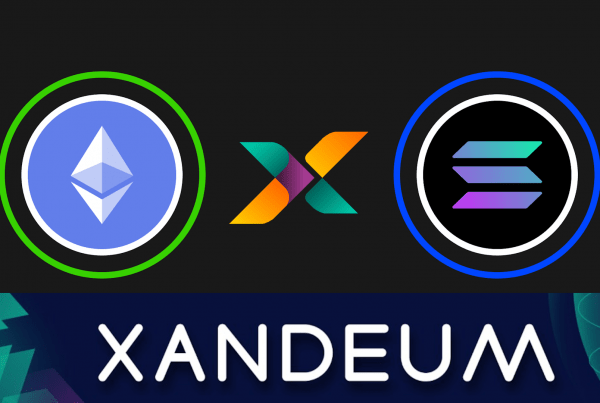
Cryptocurrencies have garnered significant attention since the inception of Bitcoin in 2009. The market has since evolved, with the development of various digital assets, each with its unique features and use cases. One such advancement is the introduction of stablecoins, which have garnered substantial interest due to their stability and potential applications in the world of finance. This article explores the role of stablecoins in the future of cryptocurrency, their benefits, and the potential they hold for transforming the financial landscape.
What Are Stablecoins?
Stablecoins are a type of digital currency that aims to maintain a stable value, typically pegged to a reserve of assets such as fiat currency, commodities, or other cryptocurrencies. These assets serve as collateral, ensuring that the value of the stablecoin remains relatively constant despite the often-volatile nature of cryptocurrencies. There are several types of stablecoins, such as:
Fiat-backed Stablecoins
These stablecoins are backed by a reserve of fiat currency, like the US Dollar or Euro, and are typically issued by a centralized entity. The most well-known example is Tether (USDT), which is pegged to the US Dollar.
Commodity-backed Stablecoins
Commodity-backed stablecoins are pegged to the value of commodities like gold or oil. An example is PAX Gold (PAXG), which represents ownership of one fine troy ounce of gold.
Crypto-backed Stablecoins
These stablecoins are collateralized by other cryptocurrencies, such as Ether. Examples include MakerDAO’s DAI and Synthetix’s sUSD.
Algorithmic Stablecoins
Algorithmic stablecoins use smart contracts and algorithms to maintain their value without the need for collateral. They adjust the supply of the stablecoin to maintain its peg, such as Ampleforth (AMPL) and TerraUSD (UST).
Investing in Stablecoins
In a market filled with various cryptocurrencies, many investors wonder about the best cryptocurrencies to invest in. While stablecoins may not provide the same potential returns as more volatile digital assets, they can be a valuable addition to an investment portfolio, particularly for risk-averse investors.
Diversification
Including stablecoins in an investment portfolio can help diversify one’s holdings, reducing overall risk. As stablecoins are less correlated with the broader cryptocurrency market, they can act as a hedge against the volatility of other digital assets.
Yield Generation
Investors can also generate passive income by holding stablecoins in interest-bearing accounts or participating in DeFi lending and yield farming platforms. While returns may vary depending on the platform and market conditions, these opportunities can provide an additional revenue stream.
Risk Management
Stablecoins can be used as a safe haven during times of market uncertainty, allowing investors to protect their investments by moving funds into a more stable asset. This strategy can help minimize losses during market downturns.
Long-term Potential
As the adoption of stablecoins continues to grow, their long-term potential as an investment cannot be ignored. As more use cases emerge and as the global financial system increasingly embraces digital assets, stablecoins may become an essential part of the financial landscape, offering investors a unique opportunity to participate in this growing market.
Benefits of Stablecoins
Stablecoins offer several advantages over traditional cryptocurrencies, making them attractive for various use cases:
Price Stability
The primary benefit of stablecoins is their stability, which makes them suitable for everyday transactions and as a store of value. Unlike traditional cryptocurrencies, whose values can fluctuate dramatically, stablecoins maintain a relatively constant value.
Reduced Transaction Costs
Stablecoins enable cost-efficient cross-border transactions and remittances, as they eliminate the need for intermediaries and reduce transaction fees.
Improved Liquidity
Stablecoins provide liquidity in the cryptocurrency market, as they can act as a bridge between fiat currencies and other digital assets.
Decentralized Finance (DeFi) Applications
Many stablecoins are essential components of the DeFi ecosystem, as they facilitate lending, borrowing, and yield farming.
Financial Inclusion
Stablecoins can also play a role in promoting financial inclusion by providing access to financial services for unbanked and underbanked populations, particularly in developing countries. By leveraging stablecoins, individuals and businesses can access affordable financial services and participate in the global economy without the need for traditional banking infrastructure.
The Future of Stablecoins
As the adoption of cryptocurrencies continues to grow, stablecoins are poised to play an increasingly critical role in the digital asset landscape.
Central Bank Digital Currencies (CBDCs)
Central banks worldwide are exploring the development of their digital currencies, often referred to as CBDCs. Some of these CBDCs may adopt features similar to stablecoins, potentially leading to widespread adoption of stablecoin-like assets.
Expanded Use Cases
Stablecoins are likely to find new use cases, such as programmable money or smart contracts, and as collateral for various financial products. As the cryptocurrency market matures, stablecoins may even be used for more advanced financial applications, like hedging against market risks.
Regulatory Developments
The regulatory environment surrounding stablecoins is still in its early stages. As governments and regulators gain a better understanding of stablecoins and their potential impact on the financial system, it is likely that new regulations will be introduced to ensure the stability and security of these digital assets. This could further legitimize stablecoins and drive their adoption.
Integration with Traditional Finance
As stablecoins gain mainstream acceptance, we can expect to see greater integration with traditional financial systems. This may include the use of stablecoins for settling transactions, as well as their incorporation into traditional financial products, such as exchange-traded funds (ETFs) and index funds.
The Expanding Role of Stablecoins and their Impact on the Financial Ecosystem
Stablecoins have come a long way since their inception and are becoming an increasingly important component of the cryptocurrency landscape. With their numerous benefits and growing adoption, stablecoins are poised to shape the future of digital assets, facilitating more accessible, efficient, and secure financial transactions.
As the market continues to evolve, stablecoins will likely play a crucial role in the broader adoption of cryptocurrencies and the development of the DeFi ecosystem. They have the potential to revolutionize the way people conduct financial transactions, offering a level of stability and security that is not present in many traditional cryptocurrencies. This stability, combined with the decentralized nature of blockchain technology, allows for a more transparent and equitable financial system.
Moreover, stablecoins can help bridge the gap between traditional finance and the world of digital assets, acting as a catalyst for the integration of blockchain technology into existing financial systems. With their growing adoption, we may see a future where stablecoins serve as the foundation for new financial products and services, further blurring the lines between the traditional and digital realms.
Additionally, stablecoins could play a critical role in promoting financial inclusion, especially in developing countries where access to financial services is limited. By providing a stable and accessible means of storing and transferring value, stablecoins can empower individuals and businesses to participate in the global economy, fostering economic growth and reducing poverty.
In summary, the expanding role of stablecoins in the cryptocurrency landscape cannot be overstated.
As their adoption continues to grow, stablecoins have the potential to transform the financial landscape, paving the way for a more inclusive, efficient, and secure global financial system. Investors who understand the potential of stablecoins and their various use cases stand to benefit from the opportunities these digital assets present. By embracing stablecoins and the transformative changes they bring, we can look forward to a future where digital assets play an increasingly prominent role in the global economy.



